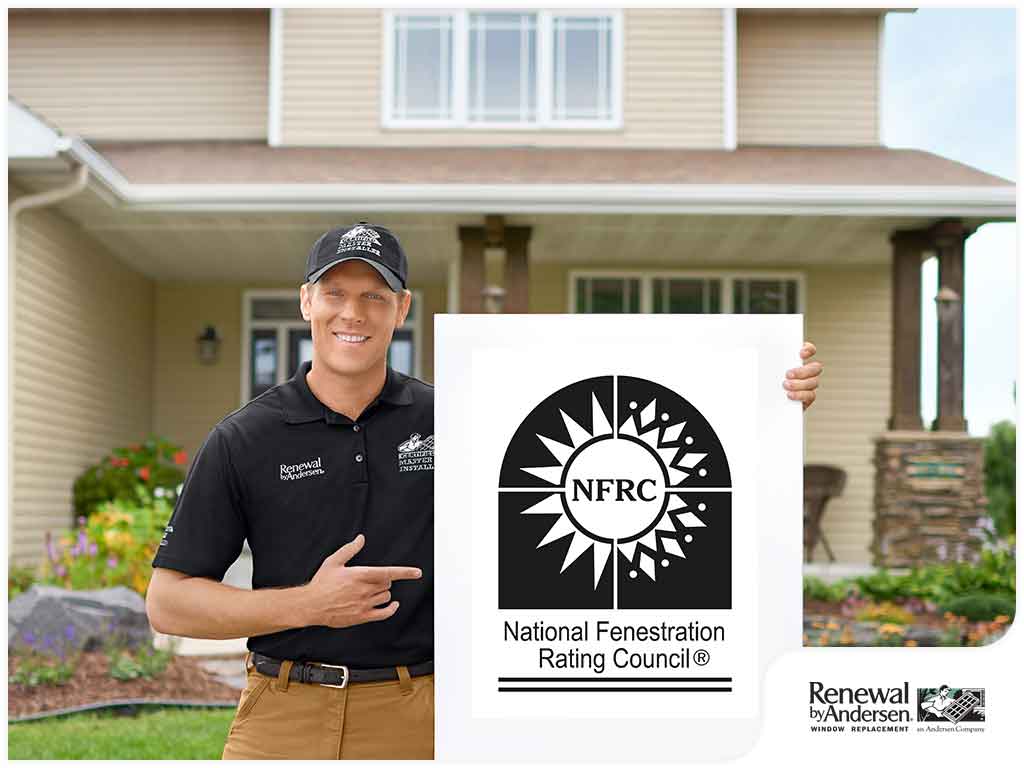

Energy-efficient windows can help improve your home’s comfort and give you savings on heating and cooling costs. The National Fenestration Rating Council (NFRC) has established a rating system to help homeowners compare the energy efficiency of windows, doors and skylights.
Learn more about the NFRC label and how it is different from ENERGY STAR® ratings from a trusted window installation company in Ohio.
ENERGY STAR ratings determine whether a product is energy-efficient, while the NFRC label compares energy-efficient products by assessing their energy performance. The NFRC helps you compare between energy-efficient products by proving independent ratings in various energy performance categories:
U-Factor – U-factor refers to how well a product can prevent heat from escaping from your interior. The lower the U-factor of a window is, the better it is at keeping heated or air conditioned air indoors.
Solar Heat Gain Coefficient (SHGC) – The SHGC measures a window’s heat gain resistance, which is important during the hot season. Windows with a lower SHGC are better at keeping your home cool on hot days.
Visible Transmittance (VT) – This is a measurement of how much visible light passes through your windows. The higher the VT, the more natural light enters your living space. You can save money on artificial lighting if you purchase new casement windows with a high VT.
Condensation Rating – This rating is optional for manufacturers, meaning you may or may not see it on the label. The higher this rating is, the better a product is at withstanding condensation.
Energy-efficient windows are made of low-maintenance, highly durable frame materials. The material also helps improve insulation and reduce heat transfer. Another component that makes windows energy-efficient is low-E glass. Special coatings in the glass deflect infrared light while keeping heat inside during winter and outside in summer. Low-E glass also blocks harmful ultraviolet light, which can damage and fade your furniture.
These windows feature multiple panes of glass, which provide better insulation than single-pane windows. ENERGY STAR windows usually have two or more panes for improved energy efficiency, enhanced impact resistance and better sound insulation. In between the glass panes are gas fills like argon or krypton. These gasses are safe, non-toxic, odorless and provide better insulation than regular air.
By eliminating air leaks, energy-efficient windows can significantly reduce your heating and cooling costs. The amount of savings you’ll receive depends on the condition and type of window. Low-E glass prevents condensation, which can cause frost buildup in windows during winter. Frost buildup in your windows will cause your space to get colder, increasing the need for heating.
Are you dealing with drafts at home? It may be time to replace your windows or doors. During winter, windows with poor energy efficiency can create drafts by circulating air at varying temperatures through your interior. In summer, they can let the sun affect your interior’s temperature. Energy-efficient products help solve all these issues. When your home doesn’t have leaks, drafts and condensation, your energy consumption will go down.
40-60 percent of fading in fabrics is due to UV radiation. Even if it’s cloudy outside, harmful UV rays can still penetrate your window glass. High-performing windows can reflect up to 74 percent of damaging UV rays. Protective films can also block up to 99 percent of UV, helping protect your furnishings from fading.
Need new casement or double-hung windows? Turn to Renewal by Andersen of Cincinnati®. We offer a wide selection of window styles in various colors and finishes. Give us a call at (866) 609-5033 or fill out our contact form to get a free in-home consultation. We work with homeowners in Cincinnati and Chester, OH.